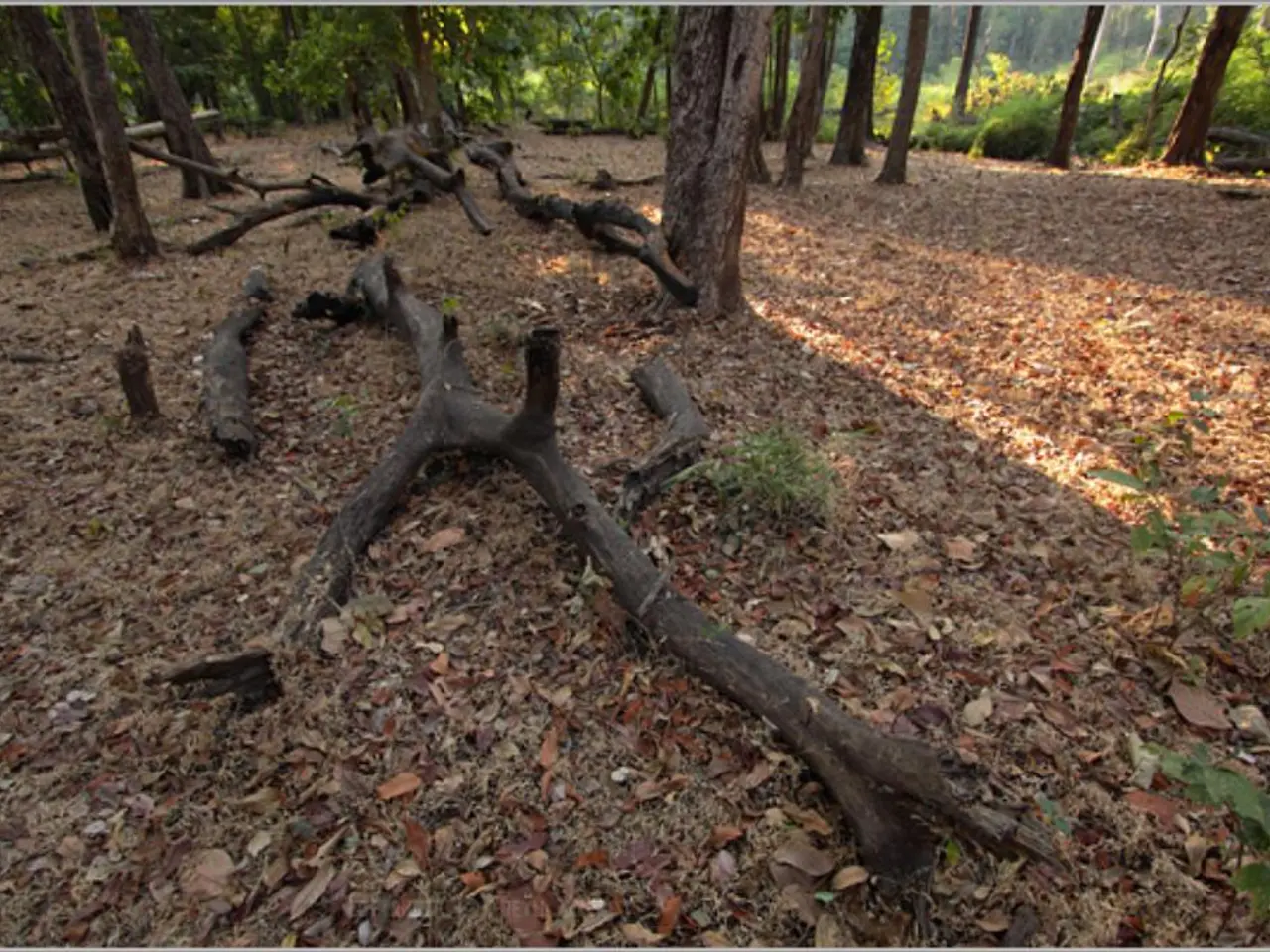Preparing Bonsai Branches for Air Layering: Techniques of Girdling and Hormone Application
Air Layering: A Step-by-Step Guide to Propagating Bonsai
Air layering is a popular technique used by bonsai enthusiasts to propagate new bonsai trees from existing branches. Here's a comprehensive guide on how to air layer a bonsai branch, ensuring a successful process.
Selecting the Right Branch
The first step is to choose a healthy, mature branch that is flexible, strong, and not too old or woody. This branch should exhibit energetic growth, as it will support root growth.
Preparing the Wound
Next, make a clean, precise incision or remove a ring of bark around the chosen branch. This exposes the inner tissue (cambium) which stimulates root formation.
Applying Rooting Hormone
Applying rooting hormone to the wounded area is optional but recommended for better success. This encourages root initiation.
Wrapping the Wound
Wrap the wounded area with moist sphagnum moss, which retains moisture and promotes healthy root development.
Covering the Moss
Cover the moss with plastic wrap or a plastic bag to keep it moist and protected. Secure it tightly with ties or raffia.
Monitoring the Air Layer
Monitor the air layer over several weeks to months, checking that the moss stays moist and roots begin to form.
Separating the Layer
Once sufficient roots have developed, cut the branch below the new root ball and plant it in soil to establish it as a new bonsai.
Post-Separation Care
Post-separation care involves watering and gradually acclimating the new plant to normal growing conditions.
Ensuring Success
- Choose the right branch by selecting healthy, energetic growth.
- Make a clean, precise wound exposing the cambium ring for best root induction.
- Use moist sphagnum moss that remains wet throughout, as dryness will hinder root growth.
- Apply rooting hormone to boost root initiation.
- Keep the moss wrapped tightly and covered with plastic to maintain humidity.
- Check regularly and re-moisten moss if needed.
- Only separate the layer when roots are well-developed to improve survival; separating too early increases failure risk.
Using Natural Hormone Sources
Bonsai enthusiasts seeking a more organic approach can turn to natural hormone sources, such as willow extract, honey, and certain plant species.
Timing and Patience
Timing and patience are crucial in air layering, as premature separation can be disastrous for the new bonsai. A concentration range of 0.1-1.0% IBA or NAA is generally recommended for air-layered bonsai branches.
Synthetic Hormone Products
Synthetic hormone products typically contain either indole-3-butyric acid (IBA) or naphthaleneacetic acid (NAA), which promote root formation. Garden pruners are not suitable for removing bark and cambium, as they can cause tearing.
A Controlled Environment
A controlled environment with relative humidity between 70-80% and temperatures ranging from 65-75°F (18-24°C) fosters prime root growth. Regularly checking the moisture levels of the air layer is crucial, as excessive drying out can quickly negate the entire air layering process.
Air Layering on Deciduous Trees
Air layering on deciduous trees during winter dormancy is challenging, but not impossible; however, success rates are lower, and careful monitoring of moisture and temperature is vital to stimulate root growth.
Avoiding Harm to the Parent Tree
Girdling, when done properly, does not substantially harm the parent tree's health. A successful girdling awakens the dormant roots, coaxing them to unfurl like tender shoots.
With Care and Attention
With careful attention to detail and a deep understanding of the process, the art of air layering transforms into a harmonious dance between nature and human intervention, yielding a resilient and thriving bonsai specimen. Honey contains a lower concentration of auxin-like substances, making it a better option for more delicate plants.
[1] Bonsai Empire (2021). Air Layering Bonsai: A Comprehensive Guide. [online] Available at: https://www.bonsaiempire.com/air-layering-bonsai/
[3] Bonsai Tonight (2021). Air Layering: The Complete Guide. [online] Available at: https://bonsaitonight.com/bonsai-air-layering/
[5] Bonsai Guy (2021). Air Layering Bonsai: The Complete Guide. [online] Available at: https://bonsaiguy.com/air-layering-bonsai/
- Caring for your home and garden could include learning the art of air layering, a technique used in home-and-garden hobbies like gardening and bonsai, to propagate new bonsai trees.
- To maintain a home-and-garden lifestyle, one may be interested in using natural hormone sources for air layering, such as willow extract, honey, or certain plant species, for a more organic approach in their bonsai propagation.



